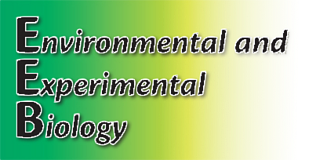
On-line: ISSN 2255–9582

| Faculty of Biology, University of Latvia | ||||||

|
Hard copy: ISSN 1691–8088
On-line: ISSN 2255–9582 Environ Exp Biol (2025) 23: 1–8
|
|||||

|
About the Journal | Retractions | Open Access | Author Guidlines | Current Issue | Archive |
|
Environmental and Experimental Biology |
Environ Exp Biol (2025) 23: 1–8 |
The Philippine shrimp aquaculture industry, a key supplier of Penaeus vannamei to domestic and international markets, faces significant disease challenges, particularly from pathogenic Vibrio species. Current disease management strategies often employ terrestrially-sourced probiotics, whose efficacy can be limited by environmental incompatibility with the aquatic host. This study aimed to address this limitation by isolating and characterizing putative probiotic microorganisms from the local aquatic environment of P. vannamei. Water samples, collected from a shrimp farm outlet pond in Negros Occidental, Philippines, were enriched with brown sugar to promote biofloc formation. Bacterial colonies were isolated on Nutrient Agar supplemented with 1% NaCl. In vitro antagonistic activity against the shrimp pathogen Vibrio harveyi was assessed via spot-on-lawn and cross-streak assays. The spot-on-lawn assay revealed a 45% inhibition rate against V. harveyi. Subsequent cross-streak assays confirmed inhibitory effects in five of nine isolates. These five isolates underwent morphological, biochemical, and molecular characterization using 16S rRNA gene sequencing. Three isolates were identified as putative Vibrio alginolyticus, while the remaining two closely matched Pseudoalteromonas species. Given the established use of non-pathogenic Vibrio and Pseudoalteromonas species as probiotics in aquaculture, these findings highlight the potential of local microflora as a source of probionts for biofloc-based shrimp culture. This approach may reduce reliance on external probiotic sources, contributing to enhanced industry sustainability.